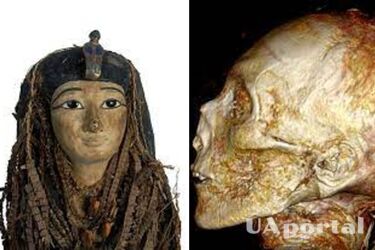Scientists managed to recreate the appearance of Egyptian Pharaoh Amenhotep I, who ruled 3,500 years ago

Scientists from Cairo have successfully recreated the appearance of the Egyptian pharaoh Amenhotep I, who lived about 3,500 years ago. During his reign, which lasted about 21 years between 1525 and 1504 BC, Amenhotep I became the second king of the 18th Dynasty of Egypt, after the death of his father Ahmose I.
This is reported by The Guardian.
Scientist Sahar Saleem, a professor of radiology at the Cairo University School of Medicine, was part of a team that successfully created a digital portrait of Pharaoh Amenhotep I using 3D computed tomography (CT) technology. This work has yielded unprecedented and fascinating results, including details of his appearance and the luxury of the jewelry that was buried with the pharaoh.
According to research, Amenhotep I died around 35 years old, was approximately 169 cm tall and had good teeth. His body was decorated with 30 amulets and a unique belt with gold beads. In appearance, the pharaoh resembled his father, with a narrow chin, a small nose, curly hair and slightly protruding upper teeth.
Read also: Archaeologists found more than 100 thousand coins that are 2,000 years old in Japan (photo)
Despite careful research, the location of the original tomb of Amenhotep I remains unknown. The mummy was found in Luxor in 1881, where Egyptians usually buried kings and nobles to protect them from grave robbers. The mummy is now stored in the Egyptian Museum in Cairo and is not unwrapped because of the perfection of the linen wrappings and the beauty of the burial mask, which scientists do not want to damage. The internal organs, except for the heart and brain, were removed by the mummifiers, leaving them behind. Although the team tried to find evidence of Amenhotep's cause of death, this proved impossible due to numerous postmortem injuries, likely caused by grave robbers after his initial burial.
As a reminder, a Viking bracelet made 1,000 years ago was found in a farmer's field in Norway (photo).
If you want to get the latest news about the war and events in Ukraine, subscribe to our Telegram channel!
